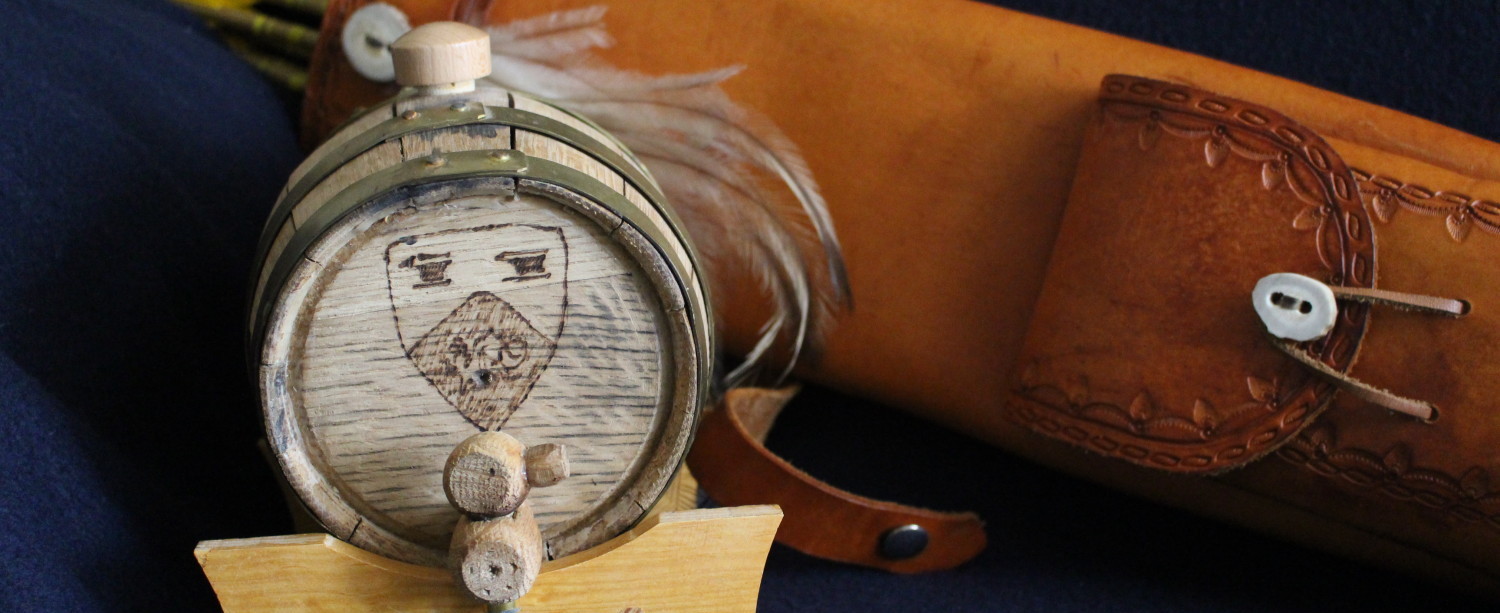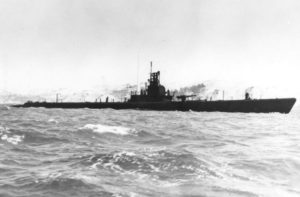In Their Own Words – Introduction
Over the last couple of years, I developed an interest in U.S. Naval history, particularly the Pacific Theater during WWII. This interest was initiated by research I did on my Father-in-Law’s ship, the USS Patterson (DD392). The more I pored over deck logs and action reports, the more interested I became in the ways that commanders operated and reported their operations in their official reports. This interest led me to begin scouring war patrol reports from submarine commanders who often described their actions in colorful terms. I was also struck by the candor with which some commanders wrote their reports even admitting that errors on their part put the vessel in mortal peril.
Several themes stood out to me as I perused these reports. So far, I have the following:
- Commanders’ candor and/or colorful descriptions
- Ways that commanders refer to the enemy (often in not-too-flattering terms)
- Issues associated with life on the vessel
I will likely identify additional themes later.
I decided to write an introduction that shows examples of these categories as a test run. I hope that readers of this blog will provide feedback about the content. I’m calling this series, “In Their Own Words.”
A Few General Observations About War Patrol Reports
One of the things that struck me when I began reading these reports was the exacting detail of certain categories of information contained within them. All aircraft contacts and ship contacts were reported in great detail. A couple of examples come from the USS Growler (SS-215) 9th War Patrol Report (May, 1944 – July, 1944). Two pages of the Growler‘s aircraft contacts report can be seen here and here. Here is a page from the Growler‘s ship contact report. Finally, all information about torpedo launches was meticulously recorded. This information included serial numbers of torpedoes and warheads, types of explosives, launch angles, gyro settings and the like.
Commanders’ Colorful Descriptions and Candid Reporting
Another issue that struck me as interesting involved the language used by some commanders that added color to the otherwise straight-forward reporting. From the USS Growler‘s 10th War Patrol report, Lt.Cmdr. Thomas B. Oakley (Navy Cross; Legion of Merit awardee) writes about an encounter with a Japanese destroyer.
The destroyer apparently sighted us and gave chase. He changed from two red to two green horizontal lights. If that is the “Go” signal – we are doing it at emergency flank speed. He has a bone in his teeth and is firing everything at us. Many explosions from shells bursting in our vicinity.
A little later in the report, after firing torpedoes at the destroyer, Oakley reports:
….Two explosions in rapid succession were heard at this time below. The destroyer disappeared and his pip disappeared from radar. We sure shoved that bone in his teeth down his throat!
You can see these comments in the context of the report here and here.
The USS Croaker (SS-246) had a very successful first war patrol that saw her sink four enemy vessels including a light cruiser. Cmdr John E. Lee (3 Navy Crosses, a Silver Star and a Bronze Star) wrote about observations immediately after the sinking of the cruiser:
All hands in the Control Party and Lieutenant Commander LAKIN were given a look at the sinking cruiser. Took color movies, which should be in competition for the Academy Award.
Frank appraisal of a commander’s decisions and actions can also be found in these reports. One example is from the USS Jack‘s (SS-259) First War Patrol Report (June – October, 1943). Cmdr Thomas M. Dykers (2 Navy Crosses, Silver Star) described in great detail an engagement that his sub had with several enemy ships. He wrote:
Fired one torpedo at the bow – it hit the stern and the ship sank in about four minutes stern first. One boat of survivors got away and passed to within twenty yards of the periscope. Some hid behind the gunwhale when they saw it. There was a sprinkling of soldiers among these men. I then left the periscope up to let some of the officers and men look at the sinking ship and this prevented my getting No. 5 in the column [editor’s note: he is referring to a fifth ship in the convoy] and almost cost us our lives.
Dykers then described the fact that the fifth ship was bearing down on them at close range as was a previously unsighted enemy aircraft that dropped bombs so close to the sub that the bow breached the surface. He further described his actions to avoid catastrophe and later in the report made the following admission:
…If I hadn’t been so eager to gloat I could have gotten the auxiliary vessel [Note: the fifth vessel mentioned earlier] and saved this vessel the damage which may yet require early termination of this patrol.
I’m going to go back to the USS Croaker on its first war patrol with Cmdr John E. Lee in command for my last commander comment in this post. On July 25, 1944 at 1530, Lee reported the following:
Struck submerged object. Noted discolored patch of water astern. Turned back and found whale threshing [sic] about on the surface and bleeding profusely. Manned 20mm and 40mm guns and tried to destroy whale. Results doubtful. Checked Pit Log sword-arm and stern planes. No apparent damage.
I have found many cases of ship/sub collisions with marine life. War was hard on sea creatures as well as humans it seems.
Environmental Conditions On Board, Food Quality, and Crew Health
One of the standard components of a war patrol report is related to sub habitability and crew health and morale. Some of the entries I’ve read so far range from humorous to brutal. The reports tally a litany of minor health issues such as abrasions and tooth problems. The reader, who did not know this before, learns that constipation is one of the major maladies faced by submariners, with virtually every report mentioning it.
Somewhat humorously, Cmdr Willard A. Saunders (Navy Cross), skipper of the USS Muskallunge (SS-262) [Editor’s Note: Yes, that is how the sub’s name was spelled], wrote in the first war patrol report (September 1943 – January, 1944):
The food was good and usually well prepared and varied. It took a month to teach our baker how to bake.
Many commanders praised the availability of comforts that I did not know existed on some WWII era subs. Cmdr Samuel D. Dealey, who commanded the USS Harder (SS-257) for six war patrols wrote in his fourth patrol report:
The food was well prepared and a balanced diet was enjoyed. The recent addition of an ice cream freezer contributed greatly to the enjoyment of meals on this cruise through equatorial waters.
Living conditions were considered to be satisfactory, aided in great part by the ultraviolet lights installed in the ship.
Dealey, who was renowned for his prowess as a sub commander (Medal of Honor, Navy Cross, Silver Star, Distinguished Service Cross), sadly perished with all hands on the USS Harder on August 24, 1944 in the South China Sea.
Air conditioning units were a prized commodity on subs. Sometimes commanders made recommendations such as the following from Cmdr John E. Lee after the USS Croaker‘s first war patrol:
It is recommended that the head in the maneuvering room be replaced with as large an air conditioning plant as can be fitted in there.
Lt. Cmdr. Albert L. Becker (a Navy Cross recipient), commander of the USS Cobia (SS-245) praised the presence of a record player and a Coke machine as important to crew morale.
Three record players were given a thorough workout; the DuMore ice cream mixer operated satisfactorily; the coca cola mixer lasted until the last two weeks of the patrol when the CO2 supply gave out; and movies were held in the forward torpedo room at regular intervals.
On a less pleasant note, sometimes treatment of problems on a sub can seem brutal. Below is part of a report from the sixth war patrol of the USS Wahoo (SS-238). The Wahoo was captained by Cmdr Dudley “Mush” Morton during her third through seventh patrol and will long be remembered as one of the finest sub commanders in WWII (4 Navy Crosses, Distinguished Service Cross, Purple Heart). After the Wahoo‘s sixth war patrol, Cmdr Morton wrote about a pest’s invasion of the boat and how it was treated:
About six days out of base, inspection revealed sixteen men infested with Pediculi pubis. Due to the small amount of Mercurial Ointment on board, these men were sponged with Diesel fuel oil, followed in one hour with a shower. Another inspection, three days later showed four men still infested. The were instructed to shave and repeat the fuel oil bath. Final inspection two days later showed the crew to be completely free of the vermin.
On the Wahoo‘s next war patrol, she was sunk killing all aboard including Cmdr. Morton.
I have not gotten to the ways that the commanders viewed and treated the enemy. I’m going to save that for a later post. This one has gone on long enough. Look forward more in this series. Please feel free to post comments.


Dave I wonder how the casualty rate of submarine Sailors compared with say the casualty rate with say airforce B29 bomber pilots Which was most dangerous
I’ve seen statistics that about 1 in 5 submariners died in WWII. Other stats suggest that U.S. bomber crews suffered a higher casualty rate. I’ll have to do a little more research to be more definitive.